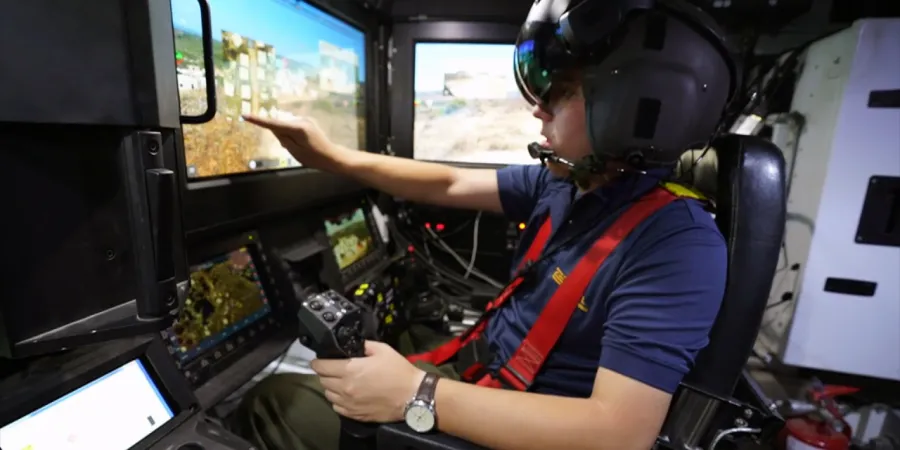IMOD, IDF Reveal Carmel AFV Demonstrators
Israel’s three major defense industries – IAI, Elbit, and Rafael – presented their prototypes for the new Carmel armored fighting vehicle
IsraelDefense
| 04/08/2019
IDF’s combat vehicle of the future will be upgraded with artificial intelligence, autonomous, and automatic capabilities. It will be compact, agile, effective, survivable, maintainable, and affordable and will be operated by only two combat soldiers. Three defense industries (Elbit Systems, Israel Aerospace Industries, and Rafael), have reached the final phase of development and presented their technological concepts following month-long trials. These advanced platforms will be integrated into the IDF’s current and future armored vehicles – both manned and autonomous.
The Directorate of Defense Research and Development (DDR&D) in the Israel Ministry of Defense (IMOD) together with the IDF Armored Corps HQ on Sunday completed a demo event to reveal the platforms developed within the framework of the Carmel Program. The program does not produce a new vehicle, but rather a breakthrough vision for combat, based on advanced technology. The program focuses on autonomous and automatic maneuvering, artificial intelligence, and more.
The event was held in the presence of IMOD’s Director-General, IDF Deputy Chief of General Staff, Commander of the Ground Forces, Head of the Directorate of Defense Research and Development in IMOD, and senior officials from the IDF and the Israeli defense establishment.
Pushing Technology to the Limits
The Carmel Program was launched three years ago as a multi-year program for the development of advanced technology to upgrade the IDF’s combat vehicles – producing an agile, effective, innovative, compact, easy-to-maneuver vehicle with relatively low costs. The purpose of the program was to develop the technology necessary for the “combat field of the future,” maintaining operational superiority via technological superiority.
During the first phase of the Carmel Program, a significant challenge was presented to the three major defense industries in Israel: to prove the feasibility of an AFV that is operated by only two combat soldiers, with a closed hatch. Following a lengthy evaluation process, IMOD selected three Israeli defense industries to continue the development program: Rafael, IAI, and Elbit Systems.
Each industry was asked to develop its own technological concept that would transform and upgrade the interior part of the IDF’s combat vehicles to an advanced cockpit (much like that of a fighter jet). The challenge: proving the feasibility of two soldiers conducting closed hatch operations and integrating technological capabilities that would enhance mission efficiency for the IDF’s maneuvering forces. The advanced cockpit integrates autonomous capabilities (maneuvering, detecting targets, defense, etc.). In addition, the combat soldier enjoys multi-sensor fusion and 360-degree surround vision, high connectivity, and situational awareness. Ultimately, the soldiers are only required to make decisions that the mechanism cannot (yet) make by itself.
The industries took the challenge head-on, employing experts in the field, and introducing advanced technological infrastructure in the process. Each industry tested its solution throughout a period of one week, within a series of complex operational scenarios. A team of experts from the DDR&D evaluated the three concepts in accordance with predetermined criteria. The technological platforms proposed for the future AFV, employ a combination of advanced sensors, VR and AR mechanisms, AI technology to process information, and more.
Elbit's demonstrator:
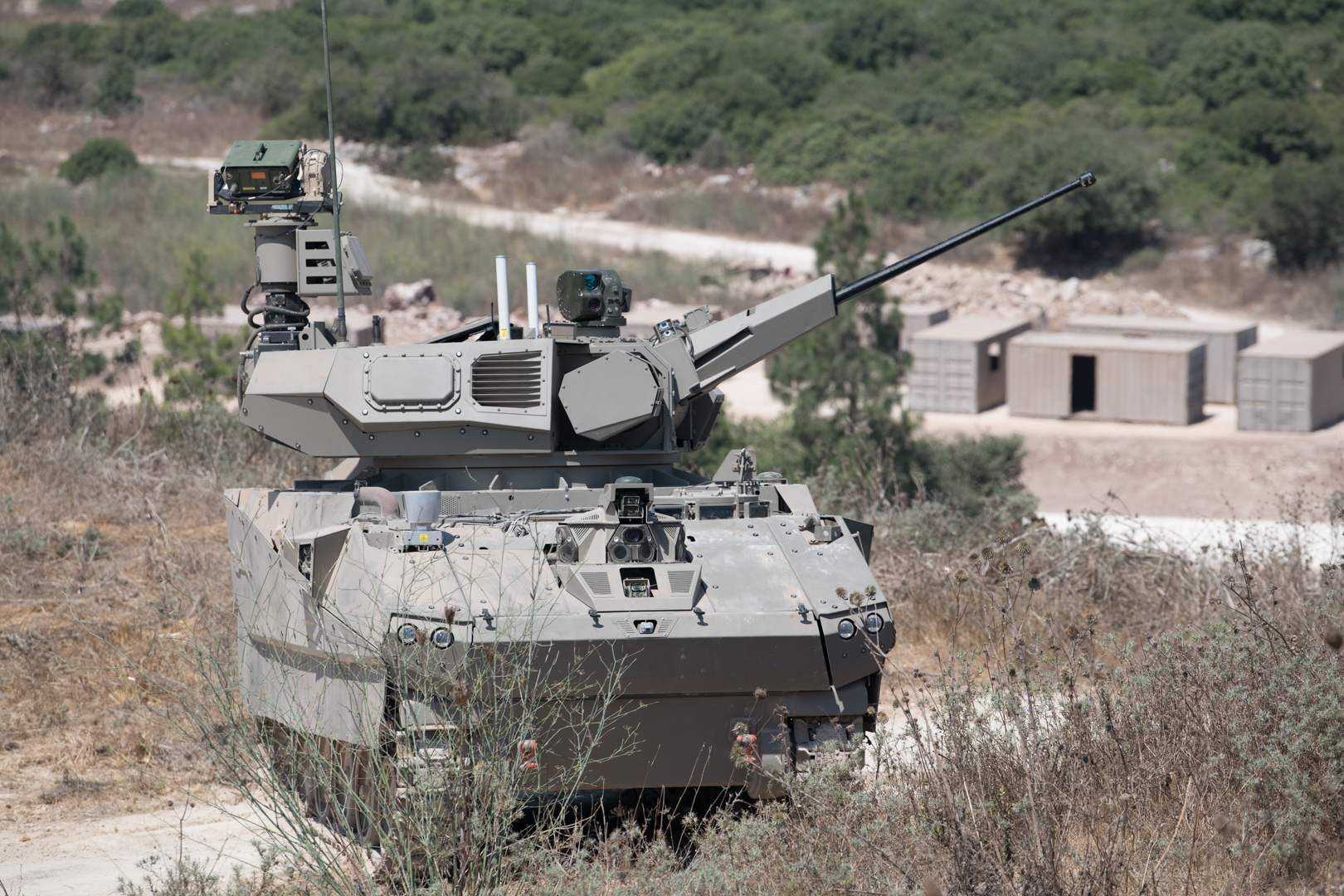
Elbit Systems developed a technological concept for combat soldiers in the future AFV, operated by the Iron Vision “See-Through” Helmet Mounted Display (HMD). This is based on the technology that the industry developed for the F-35 fighter jet. The concept is underpinned by applying autonomous capabilities and Artificial Intelligence (AI), to accelerate decision making and facilitate target engagement with dramatically increased rapidity and accuracy. Using a Helmet Mounted Display (HMD) a crew of two combat soldiers operates the AFV under closed hatches, further enhancing capabilities and survivability. The AFV successfully demonstrated its capacity to function as an independent high fire-power strike cell, as a networked station for multi-spectral sensing and information fusion, as well as a base platform for operating additional unmanned systems.
Rafael's demonstrator:
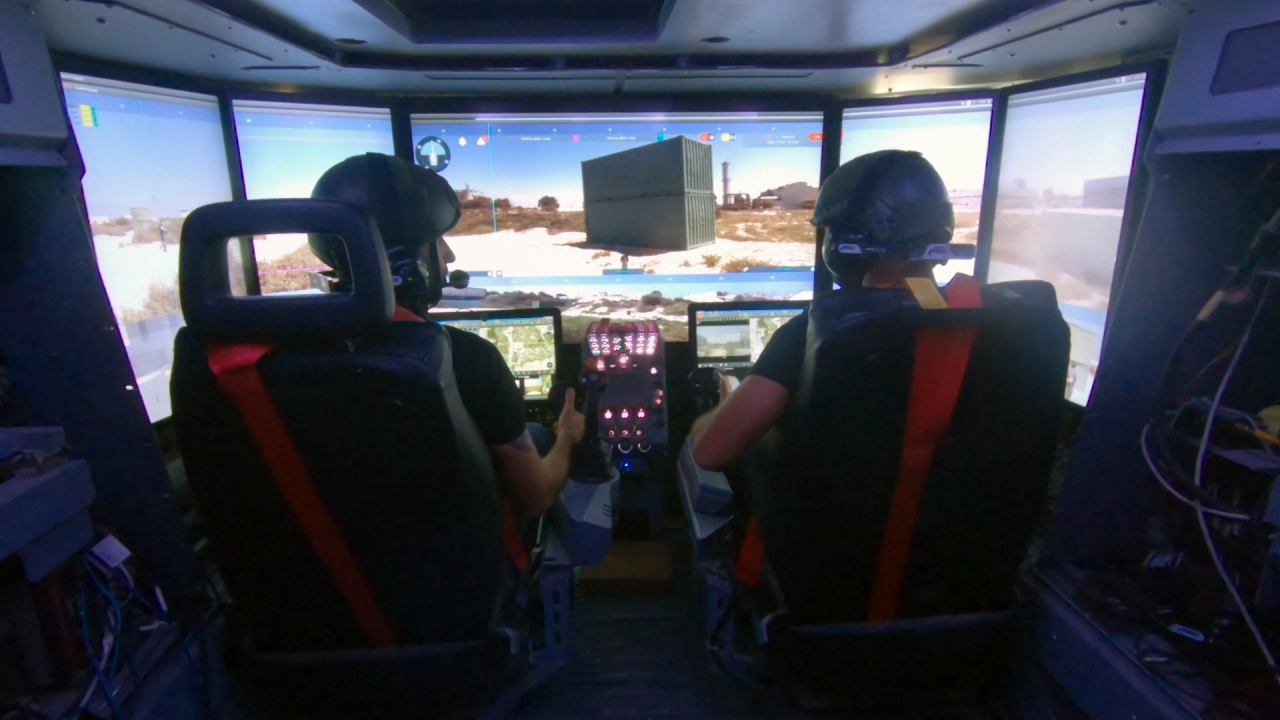
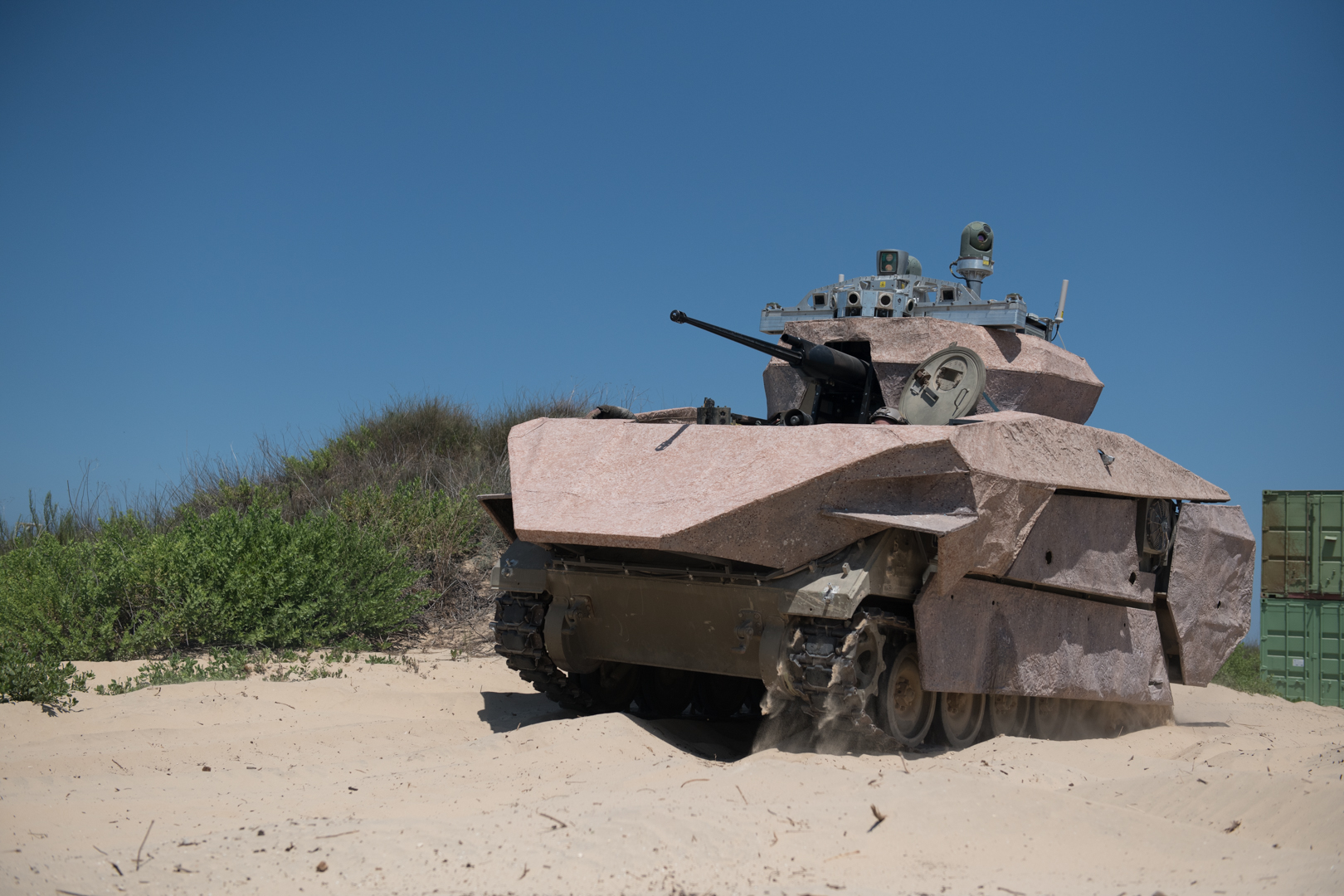
Rafael’s solution for the future combat fighting vehicle enables two crew members to perform their mission, in a fully protected closed hatch vehicle, with a breakthrough transparent cockpit design, enabling 360-degree situational awareness, using augmented reality for real-time battlefield information and data. This includes targets, Blue Forces, and other Points of Interest (POI’s), as well as an autonomous mission support system, for autonomous mission planning, driving, and simultaneous operation of all vehicle weapon systems, all based on combat artificial intelligence capabilities.
IAI's demonstrator:
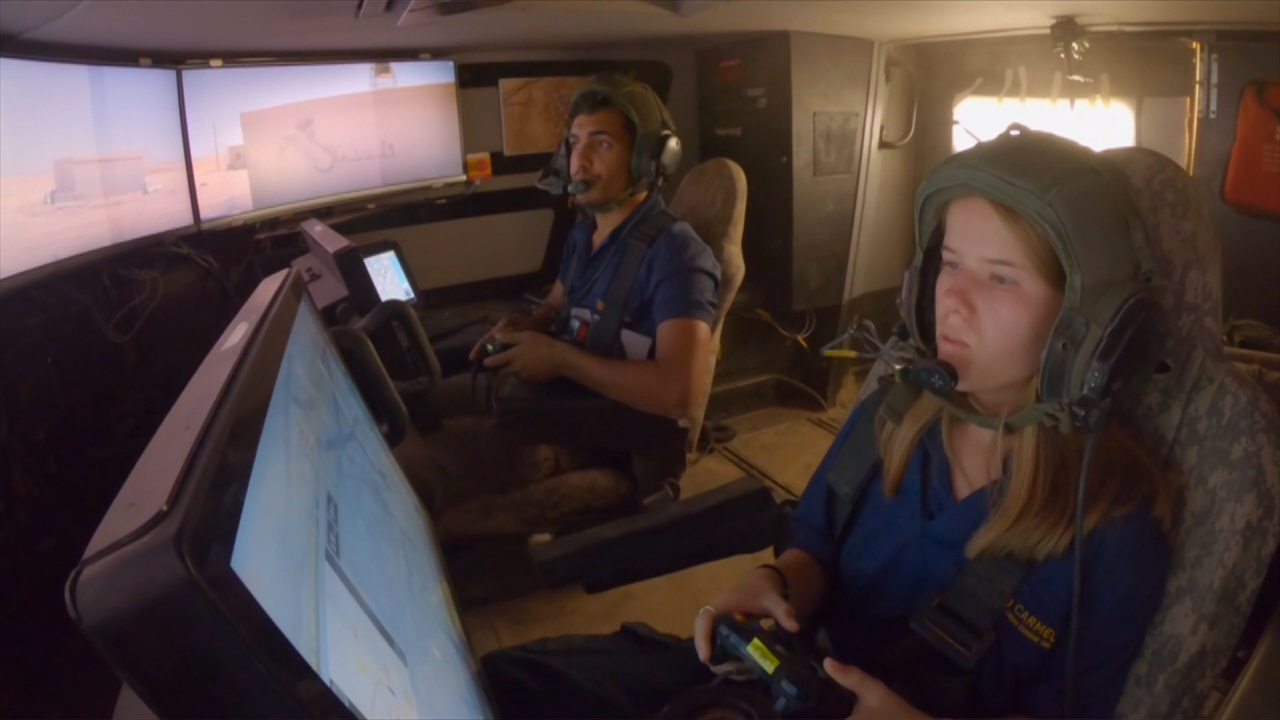
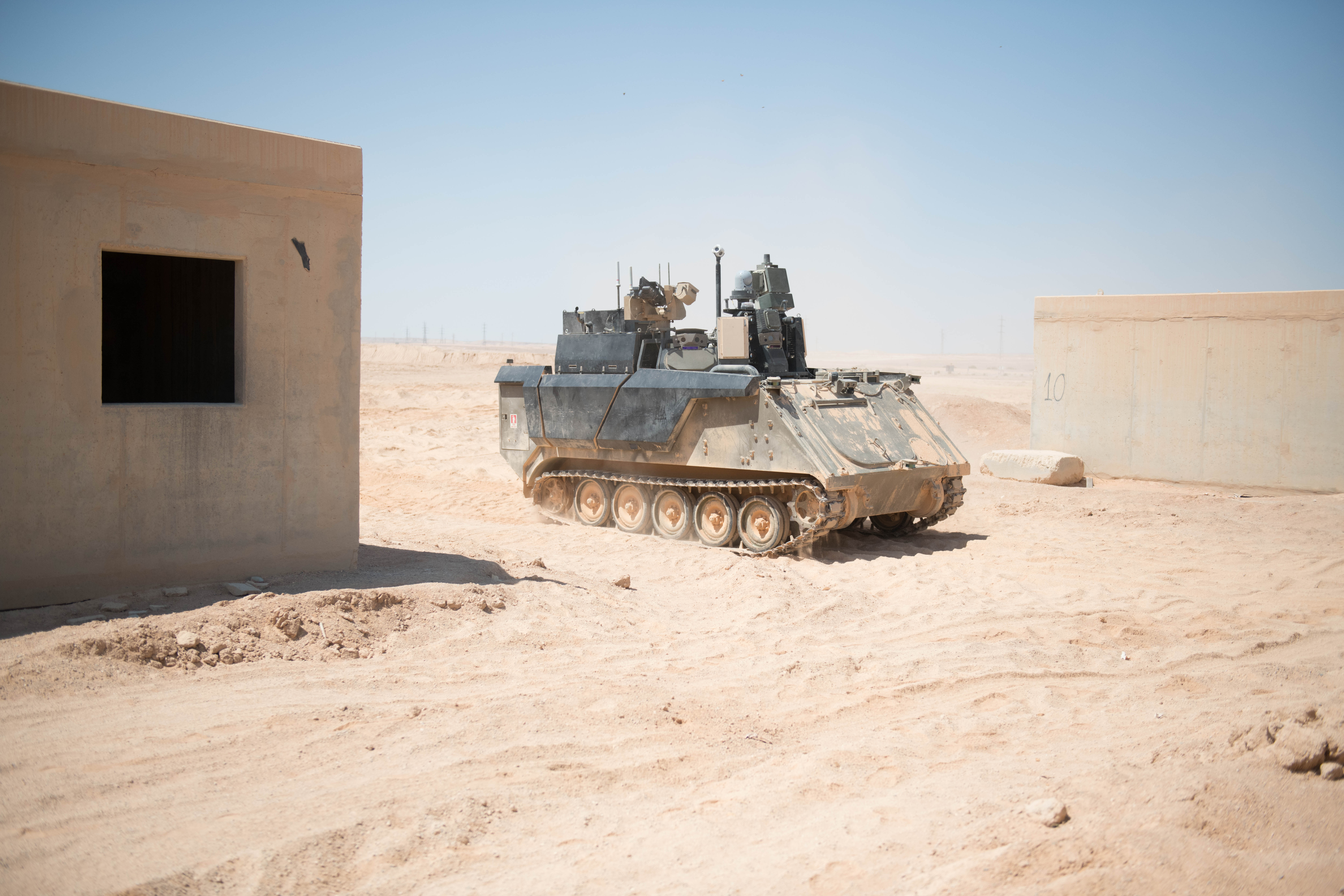
IAI presented a platform based on the company’s family of autonomous systems and robotic tools, which are currently in wide operational use in Israel and around the world. The Carmel platform proposed by IAI, combines a panoramic display, individual control screens, and a control stick similar to a gaming console or “Xbox Joystick.” The autonomous capabilities in the combat vehicle are operated by a central, autonomous system, which integrates the various components in the platform and assists the human operator in processing information, focusing on critical threats, and making effective real-time decisions. The platform is based on AI technology to detect threats, enabling effective target engagement and weapon system management as well as autonomous driving in various terrains.
Creativity and Innovation
In addition to the aforementioned platforms, the DDR&D led a program to develop technological solutions that were not presented in Sunday’s demo. These platforms integrate the following capabilities: hybrid propulsion, cyber defense, active camouflage, multi-task radar, a system to identify troops, and more. The platforms that have reached an advanced stage in the development process, are already being integrated into the AFVs that the IMOD Tank and APC Directorate is developing and producing today.
The Carmel Program is based on breakthrough and innovative technologies on a global scale and the platforms developed by Israeli industries are garnering international interest, IMOD concluded in its release. The technological capabilities tested in the Carmel Program have never before been integrated into combat systems. IMOD’s Carmel Program places the State of Israel at the forefront of the worldwide effort to develop advanced combat vehicles. This is made possible by the creativity and innovative capabilities of Israel’s defense industries. The results of the Carmel Program will serve as the technological and engineering infrastructure of both the manned and autonomous defense and combat tools of the future, the ministry said.
***
Photos: IMOD Spokesperson’s Office
Israel’s three major defense industries – IAI, Elbit, and Rafael – presented their prototypes for the new Carmel armored fighting vehicle
IDF’s combat vehicle of the future will be upgraded with artificial intelligence, autonomous, and automatic capabilities. It will be compact, agile, effective, survivable, maintainable, and affordable and will be operated by only two combat soldiers. Three defense industries (Elbit Systems, Israel Aerospace Industries, and Rafael), have reached the final phase of development and presented their technological concepts following month-long trials. These advanced platforms will be integrated into the IDF’s current and future armored vehicles – both manned and autonomous.
The Directorate of Defense Research and Development (DDR&D) in the Israel Ministry of Defense (IMOD) together with the IDF Armored Corps HQ on Sunday completed a demo event to reveal the platforms developed within the framework of the Carmel Program. The program does not produce a new vehicle, but rather a breakthrough vision for combat, based on advanced technology. The program focuses on autonomous and automatic maneuvering, artificial intelligence, and more.
The event was held in the presence of IMOD’s Director-General, IDF Deputy Chief of General Staff, Commander of the Ground Forces, Head of the Directorate of Defense Research and Development in IMOD, and senior officials from the IDF and the Israeli defense establishment.
Pushing Technology to the Limits
The Carmel Program was launched three years ago as a multi-year program for the development of advanced technology to upgrade the IDF’s combat vehicles – producing an agile, effective, innovative, compact, easy-to-maneuver vehicle with relatively low costs. The purpose of the program was to develop the technology necessary for the “combat field of the future,” maintaining operational superiority via technological superiority.
During the first phase of the Carmel Program, a significant challenge was presented to the three major defense industries in Israel: to prove the feasibility of an AFV that is operated by only two combat soldiers, with a closed hatch. Following a lengthy evaluation process, IMOD selected three Israeli defense industries to continue the development program: Rafael, IAI, and Elbit Systems.
Each industry was asked to develop its own technological concept that would transform and upgrade the interior part of the IDF’s combat vehicles to an advanced cockpit (much like that of a fighter jet). The challenge: proving the feasibility of two soldiers conducting closed hatch operations and integrating technological capabilities that would enhance mission efficiency for the IDF’s maneuvering forces. The advanced cockpit integrates autonomous capabilities (maneuvering, detecting targets, defense, etc.). In addition, the combat soldier enjoys multi-sensor fusion and 360-degree surround vision, high connectivity, and situational awareness. Ultimately, the soldiers are only required to make decisions that the mechanism cannot (yet) make by itself.
The industries took the challenge head-on, employing experts in the field, and introducing advanced technological infrastructure in the process. Each industry tested its solution throughout a period of one week, within a series of complex operational scenarios. A team of experts from the DDR&D evaluated the three concepts in accordance with predetermined criteria. The technological platforms proposed for the future AFV, employ a combination of advanced sensors, VR and AR mechanisms, AI technology to process information, and more.
Elbit's demonstrator:

Elbit Systems developed a technological concept for combat soldiers in the future AFV, operated by the Iron Vision “See-Through” Helmet Mounted Display (HMD). This is based on the technology that the industry developed for the F-35 fighter jet. The concept is underpinned by applying autonomous capabilities and Artificial Intelligence (AI), to accelerate decision making and facilitate target engagement with dramatically increased rapidity and accuracy. Using a Helmet Mounted Display (HMD) a crew of two combat soldiers operates the AFV under closed hatches, further enhancing capabilities and survivability. The AFV successfully demonstrated its capacity to function as an independent high fire-power strike cell, as a networked station for multi-spectral sensing and information fusion, as well as a base platform for operating additional unmanned systems.
Rafael's demonstrator:


Rafael’s solution for the future combat fighting vehicle enables two crew members to perform their mission, in a fully protected closed hatch vehicle, with a breakthrough transparent cockpit design, enabling 360-degree situational awareness, using augmented reality for real-time battlefield information and data. This includes targets, Blue Forces, and other Points of Interest (POI’s), as well as an autonomous mission support system, for autonomous mission planning, driving, and simultaneous operation of all vehicle weapon systems, all based on combat artificial intelligence capabilities.
IAI's demonstrator:


IAI presented a platform based on the company’s family of autonomous systems and robotic tools, which are currently in wide operational use in Israel and around the world. The Carmel platform proposed by IAI, combines a panoramic display, individual control screens, and a control stick similar to a gaming console or “Xbox Joystick.” The autonomous capabilities in the combat vehicle are operated by a central, autonomous system, which integrates the various components in the platform and assists the human operator in processing information, focusing on critical threats, and making effective real-time decisions. The platform is based on AI technology to detect threats, enabling effective target engagement and weapon system management as well as autonomous driving in various terrains.
Creativity and Innovation
In addition to the aforementioned platforms, the DDR&D led a program to develop technological solutions that were not presented in Sunday’s demo. These platforms integrate the following capabilities: hybrid propulsion, cyber defense, active camouflage, multi-task radar, a system to identify troops, and more. The platforms that have reached an advanced stage in the development process, are already being integrated into the AFVs that the IMOD Tank and APC Directorate is developing and producing today.
The Carmel Program is based on breakthrough and innovative technologies on a global scale and the platforms developed by Israeli industries are garnering international interest, IMOD concluded in its release. The technological capabilities tested in the Carmel Program have never before been integrated into combat systems. IMOD’s Carmel Program places the State of Israel at the forefront of the worldwide effort to develop advanced combat vehicles. This is made possible by the creativity and innovative capabilities of Israel’s defense industries. The results of the Carmel Program will serve as the technological and engineering infrastructure of both the manned and autonomous defense and combat tools of the future, the ministry said.
***
Photos: IMOD Spokesperson’s Office

